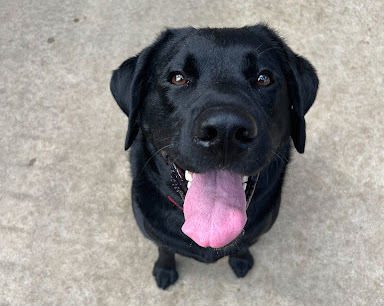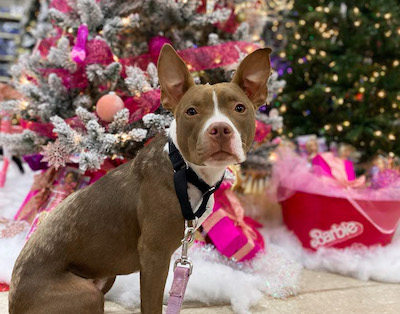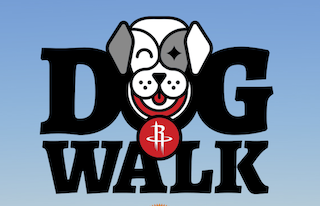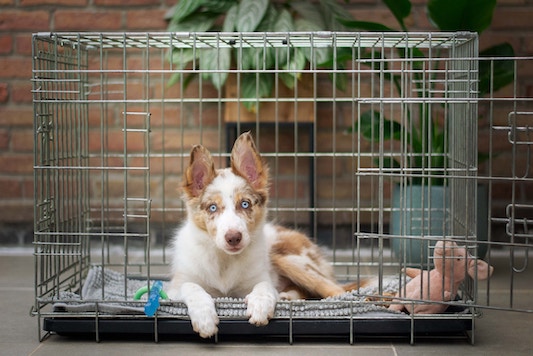It is no surprise that the Labrador Retriever can be considered the “American Sweetheart” of dog breeds. According to the American Kennel Club, the Labrador Retriever, a staple household name, has ranked number one as the most popular dog in the United States since 1991. The Labrador Retriever is a working dog that tends to be pretty food motivated. However, training isn’t only about treats! You’ll find the ability to train your dog to its fullest potential by tapping into their history. Understanding the foundation of their genetic makeup, where they came from, and how to use that information to your advantage will turn your training sessions from good to great!
In the 1800s, Labrador Retrievers were originally bred as water dogs to assist fishermen and retrieve ducks. They typically range from 55 to 80 pounds when fully grown, which was an essential characteristic of their original breeding. Labradors were bred and built stocky, with double thick coats to help repel water and withstand less-than-ideal weather conditions.
Training your Lab will love
Specialty Training Programs
If you are seeking to work on a specific training skill set outside of basic obedience, consider enrolling your labrador in a training program such as waterfowl hunting, game hunting, scent work, dock diving, and even service training. As working dogs, all of these training programs are rigorous and will give them the energy burn and mental stimulation they desire, as well as hone in on their skills genetically! It’s important to note these types of training are typically time-consuming for the owner.
Household and local training
If you are looking for obedience training that will fit your day-to-day lifestyle, both in and out of the home, let’s talk about motivators that will help your labrador succeed.
When looking for a positive reinforcer, you are looking for the addition of something (food, play, etc.) that increases the likelihood of a behavior happening again.
Food as motivation
Labrador Retrievers are notoriously known to be food motivated. Music to a trainer’s ears! You may be able to get your dog to work for their kibble if they are really food motivated. To ensure they are hungry, portion one of their daily meals into a baggie for training. Whatever you don’t use, they can have at a later mealtime. If you are working on a more advanced behavior, consider increasing the value of your treats from kibble to deli meat or chicken. You can always reduce the value later once your dog is nailing it!
Safety tip: Labrador Retrievers are barrel-chested dogs which make them more at risk of suffering from bloat. Avoid feeding them large meals before running or swimming to reduce the risk. Keep training sessions short and sweet, and reduce the use of food sooner than later if you can.
Ball as motivation
It’s all in the name! Labrador Retrievers tend to have a natural motivation for the tennis ball. Consider using a tennis ball as a reinforcer for wanted behavior, offering it instead of a treat.
To keep your tennis ball exciting and effective as a reinforcer:
- Don’t allow “free access.” Keep the tennis ball away until you are ready to play fetch or train.
- When delivering the tennis ball as a reinforcer, only allow access for 3-5 seconds. Remove the ball, and then ask for the next behavior, allowing an opportunity to gain access to the ball again.
- Teach an “out” or “drop it” command before using the ball as a reinforcer to avoid chasing your dog all over the place and trying to get the ball from them.
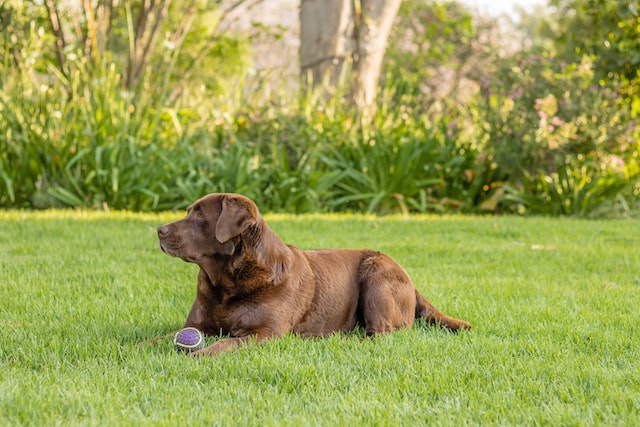
Play as motivation
To piggyback off of using the ball as a reinforcer, other types of play can work well to reinforce behaviors. Labradors are very enthusiastic, and you will find that even as they grow well into adulthood, they are known to still hold on to their puppy-like spirit. Use this to your advantage and use play as a reinforcer. This could be high praise, physical attention, running around, or light “wrestling.” Like with the ball, keep play to about 3-5 seconds between repetitions. For example, ask for sit. As soon as your dog sits, release them and offer play for 3-5 seconds. Then ask for another sit, and so on and so forth.
Safety tip: Labrador Retrievers are predisposed to physical limitations such as elbow and hip dysplasia. You can have your dog tested at a young age to see if they are more likely to develop these. Otherwise, we recommend keeping an eye on them for signs of discomfort.
Water as motivation
Water can be an excellent positive reinforcer, especially in the summer months. You can use the water hose in the backyard and offer a few seconds of water sprayed into the air or on them, or even just provide a bowl of water. You can offer 3-5 seconds of water access after asking them to “come.” If you have a small pool of water, such as a baby pool, you could even offer them to splash around in the pool for a few seconds. Offering ice cubes may also work, however, they tend to take a little longer than we’d like to chew and may slow down your repetition speed too much.
Before you start
It’s important to remember that what one dog see’s as a positive reinforcer may not be the same for another dog. When looking for a positive reinforcer, you are looking for the addition of something (food, play, etc.) that increases the likelihood of a behavior happening again. If you start using physical attention as a reinforcer, and your dog’s success rate decreases, consider switching back to another reinforcer, such as food! Labrador Retrievers aim to please and will thank you for adding variety to their training regimen. Keep training sessions fun for you and your dog, and take breaks when needed. The bond between your Labrador and you will grow even stronger as you build your relationship and training foundation. To learn more about Labrador Retrievers, check out our blog post!
